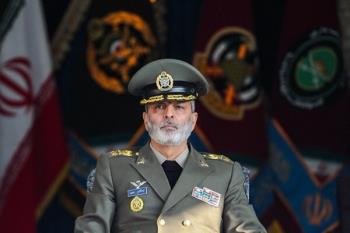Alwaght- Yemen’s Ansarullah movement has rejected demands by the country’s former Saudi-backed regime to hand over the port city of Hudaydah and to inspect flights to Sana’a airport.
The former government’s delegation made the demands on Friday, the second day of peace negotiations brokered by the United Nations in Sweden.
Mohammed Abdulsalam, the head of the Houthi delegation at the peace talks, further said the port of Hudaydah must be kept apart from the military conflict, and that a government should be formed first before all parties are disarmed.
The regime, led by Yemen’s former president Abd Rabbuh Mansur Hadi, a staunch ally of Riyadh, has tightly besieged Hudaydah through its armed militia and mercenaries employed by the United Arab Emirates since June, when they launched a full-scale offensive against the western port city.
Since the onset of the operation against Hudaydah, the humanitarian situation has worsened in Yemen due to a broad economic collapse. More than 70 percent of Yemen's imports used to pass through the docks of the vital port.
The invaders have failed to achieve their objective of overrunning Hudaydah and defeating Houthi fighters.
Meanwhile, member of Houthi delegation Abdul Malek al-Aajri said that Sana’a international airport, currently under an imposed closure by the former government and a Saudi-led military coalition, was an important humanitarian matter for the Ansarullah, who use it to transport sick people and food supplies, rejecting any form of inspection.
“Sana’a airport is an international airport which serves the trips to Sana’a from the rest of the world. Yemen does not need domestic flights, but we need international flights to transport those who are sick and others like travelers, students, prisoners as well as humanitarian supplies. The airport is an urgent and important humanitarian matter,” said al-Aajri.
The Hadi delegation had proposed that it would allow the airport in the Houthi-held capital Sana’a to be reopened only if all flights land in a government-held airport for inspection.
The Saudi-led coalition, which has so far bombed the airport several times, has tightly restricted access to the airport. It also controls the air space.
Leading a coalition of its allies, including the UAE and Sudan, Saudi Arabia invaded Yemen in March 2015 in an attempt to reinstall Hadi, who had resigned amid popular discontent and fled to Riyadh.
The imposed war initially consisted of an airstrike campaign but was later coupled with a naval blockade and the deployment of ground mercenaries to Yemen.
Since the onset of aggression, the Yemeni army, backed by fighters from the country’s popular Houthi Ansarullah movement, has been defending the impoverished nation against the invaders. The coalition is also resolute to crush the movement as another goal in its war on Yemen, which is teetering on the edge of famine.
The aggression is estimated to have left 56,000 Yemenis dead.
More than three and a half years into the war, Saudi Arabia has achieved neither of its objectives. Riyadh had declared at the start of the invasion that the war would take no more than a couple of weeks.
In a statement on Thursday, the World Food Programme (WFP), the world's largest humanitarian organization addressing hunger and promoting food security, said that its survey conducted in October found that more than 15 million Yemenis were in a “crisis” or “emergency” situation and that the number could hit 20 million without sustained food aid.
Furthermore, UN Spokesperson Stephane Dujarric said on Friday that nearly 1,500 civilian casualties in Yemen were reported in the period between August and October this year.
“This means that means that an average of 123 civilians deaths and injuries every week during this period,” he said.



























